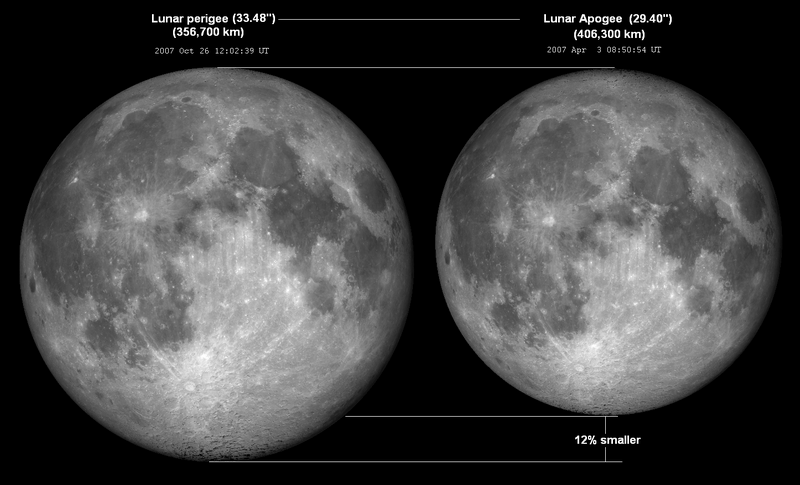[/caption]
The Moon takes about 27.3 days to complete one orbit around the Earth. That’s the simple answer to the orbit of the Moon, but there’s a lot more going on, so let’s take a look.
The first think that you have to understand is that that Earth and the Moon actually orbit a common center of gravity. This place is about 4,700 km from the center of the Earth. In other words, the Earth wobbles back and forth because of the orbit of the Moon. Some scientists have even proposed that the Earth and the Moon are actually a double planet because of their relationship, but this would only be the case if the common center of gravity was outside the surface of the Earth.
The orbit of the Moon is about 385,000 km from the Earth on average. Like the planets in the Solar System, the orbit of the Moon isn’t circular; it actually follows an elliptical path around the Earth. At its closest point, called perihelion, the Moon is 364 397 km from the Earth. And then at its most distant point, called aphelion, the Moon is 406 731 km.
You might have heard that the Moon is slowly drifting away from the Earth. Although the Moon is tidally locked to the Earth, presenting the same face to our planet, the Earth isn’t tidally locked. But in about 50 billion years from now, the Moon will complete an orbit once every 47 days, and it will remain in exactly the same place in the sky. One half of the Earth will be able to see the Moon, and it will be hidden from the other half. Of course, the Sun is expected to become a red giant in about 5 billion years and potentially destroy the Earth and Moon, so this time may never come.
Want to learn more about orbits? Here’s an article about the orbit of the Earth, and here’s one about the orbit of Mars.
Here’s more information about the orbit of the Moon, and here’s a cool article from Windows on the Universe.
You can listen to a very interesting podcast about the formation of the Moon from Astronomy Cast, Episode 17: Where Did the Moon Come From?

